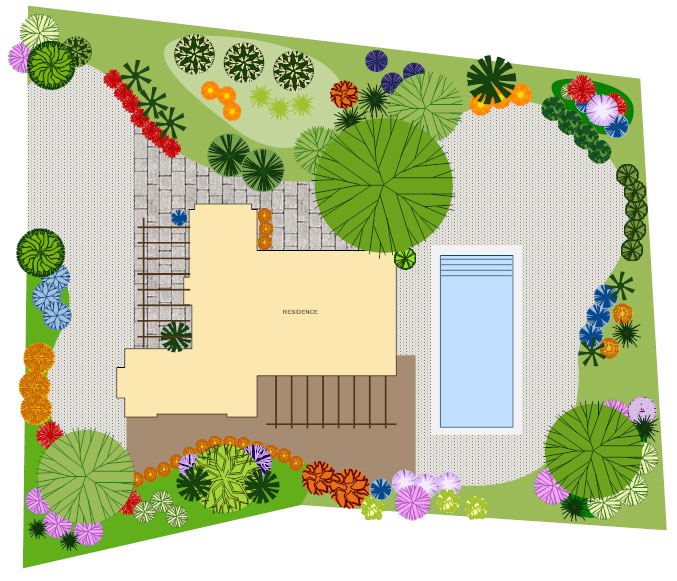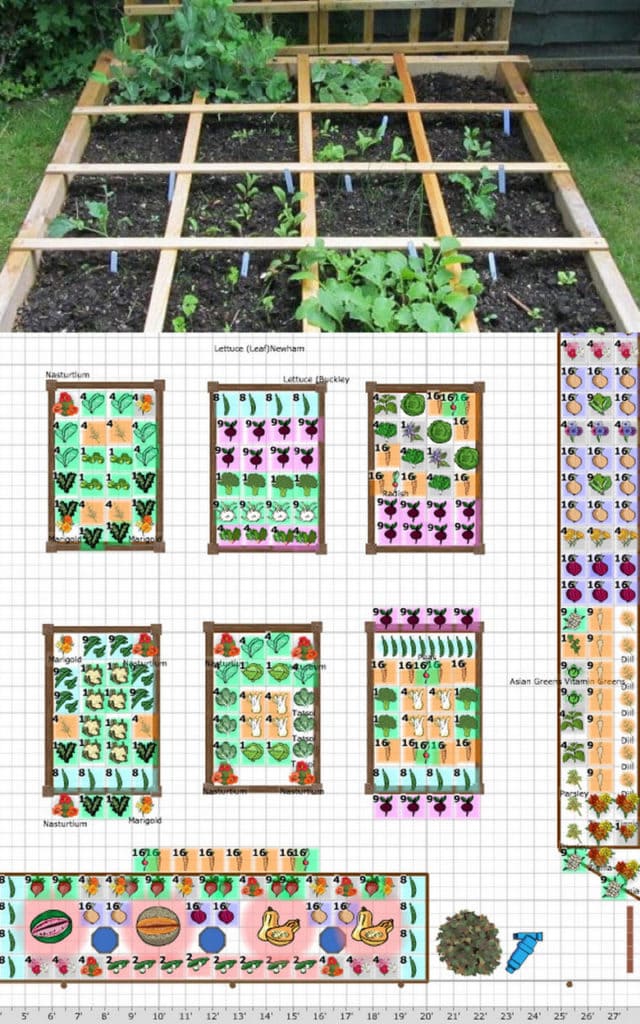How to: Seasonal Fruit Tree Care

Are you dreaming of transforming your outdoor space into a lush, inviting sanctuary? Creating a perfect garden layout plan can seem daunting, but with the right approach, it can be an exciting and rewarding journey. Think of your garden as a canvas waiting to be painted with vibrant colors, textures, and shapes. Let's dive into the world of garden layout design and explore how you can bring your dream garden to life.
Understanding the Basics of Garden Layout Design
Before you start sketching your garden map, it's essential to understand the fundamentals of garden layout design. This includes considering the size and shape of your garden, the climate, and the existing landscape. Each of these factors will influence your garden planning tips and help you create a cohesive and functional space.
Assess Your Space
Begin by assessing your garden space. Measure the dimensions and note any existing features such as trees, pathways, or structures. This will give you a clear picture of what you have to work with and help you visualize your garden layout ideas more effectively.
Consider the Climate
Understanding your local climate is crucial for successful garden planning. Research which plants thrive in your region and consider factors like sunlight exposure, rainfall, and temperature fluctuations. This knowledge will guide your plant selection and ensure your garden flourishes year-round.
Evaluate the Existing Landscape
Take a close look at the current state of your garden. Identify any slopes, drainage issues, or soil types. This evaluation will help you determine what changes need to be made and what elements you can incorporate into your garden layout design.
Creating Your Garden Map
Now that you have a solid understanding of your garden's basics, it's time to create your garden map. This visual representation will serve as your blueprint, guiding you through the entire process.
Sketch Your Garden Layout
Start by sketching a rough outline of your garden. Include any permanent features and mark the areas where you want to place different elements such as flower beds, seating areas, or water features. This initial sketch will help you organize your thoughts and ideas.
Use Garden Planning Tools
There are numerous garden planning tools available online that can make the process easier and more enjoyable. Websites like Garden Planner offer interactive software that allows you to design your garden layout digitally. These tools can help you visualize your garden layout ideas more accurately and make adjustments as needed.
Incorporate Key Elements
When creating your garden map, consider incorporating key elements that will enhance the overall aesthetic and functionality of your space. These elements can include:
- Pathways: Define the flow of your garden with well-planned pathways. They can be made of various materials like stone, gravel, or wood, depending on your desired style.
- Focal Points: Create focal points using statues, fountains, or unique plants. These elements draw the eye and add visual interest to your garden.
- Seating Areas: Designate areas for relaxation and socializing. Comfortable seating can transform your garden into an outdoor living room.
- Plant Beds: Plan your plant beds carefully, considering the height, color, and texture of the plants. Mix and match to create a visually appealing arrangement.
Implementing Your Garden Layout Plan
With your garden map in hand, it's time to bring your vision to life. This phase involves selecting plants, preparing the soil, and installing any hardscape features.
Selecting the Right Plants
Choosing the right plants is crucial for a successful garden layout. Consider the following factors when making your selections:
- Sunlight Requirements: Ensure that the plants you choose are suitable for the amount of sunlight your garden receives.
- Soil Type: Match your plants to the soil type in your garden. Some plants prefer well-drained soil, while others thrive in moist conditions.
- Color and Texture: Mix and match plants with different colors and textures to create a visually appealing garden.
Preparing the Soil
Before planting, prepare the soil to ensure your plants have the best chance of thriving. This may involve:
- Testing the Soil: Conduct a soil test to determine its pH level and nutrient content. This information will help you choose the right plants and amendments.
- Adding Compost: Enrich the soil with organic matter like compost to improve its structure and fertility.
- Tilling: Till the soil to break up any clumps and improve aeration.
Installing Hardscape Features
Hardscape features like pathways, patios, and retaining walls add structure and functionality to your garden. When installing these elements, consider the following:
- Material Selection: Choose materials that complement your garden's style and are durable enough to withstand the elements.
- Proper Installation: Ensure that hardscape features are installed correctly to prevent issues like water pooling or uneven surfaces.
- Maintenance: Plan for regular maintenance to keep your hardscape features looking their best.
Maintaining Your Garden Layout
Once your garden layout plan is implemented, maintaining it is essential to keep it looking beautiful and healthy. Regular maintenance tasks include:
- Watering: Ensure your plants receive the right amount of water. Overwatering can be just as harmful as underwatering.
- Pruning: Regularly prune your plants to encourage healthy growth and maintain their shape.
- Weeding: Keep weeds at bay to prevent them from competing with your plants for nutrients and water.
- Fertilizing: Apply fertilizer as needed to provide your plants with the nutrients they need to thrive.
Conclusion
Creating a perfect garden layout plan is a rewarding journey that transforms your outdoor space into a sanctuary. By understanding the basics of garden layout design, creating a detailed garden map, and implementing your plan with care, you can bring your dream garden to life. Remember, gardening is a continuous process, and your garden will evolve over time. Embrace the changes and enjoy the beauty that each season brings.
FAQs
What are the essential tools for garden planning? Essential tools for garden planning include a measuring tape, sketch pad, garden planning software, and a soil test kit. These tools will help you assess your space, create a detailed garden map, and prepare the soil for planting.
How do I choose the right plants for my garden? Choosing the right plants involves considering factors like sunlight requirements, soil type, and climate. Research plants that thrive in your region and select a mix of colors and textures to create a visually appealing garden.
What is the importance of hardscape features in a garden? Hardscape features like pathways, patios, and retaining walls add structure and functionality to your garden. They define the flow of the space, provide areas for relaxation, and enhance the overall aesthetic.
How often should I maintain my garden? Regular maintenance is essential for a healthy and beautiful garden. Tasks like watering, pruning, weeding, and fertilizing should be performed as needed, depending on the specific requirements of your plants and the season.
Can I create a garden layout plan without professional help? Yes, you can create a garden layout plan without professional help. By following the steps outlined in this article and using available garden planning tools, you can design and implement a beautiful garden layout that reflects your personal style and preferences.
:max_bytes(150000):strip_icc()/Townhouse-5b293e4bff1b7800371788a2.jpg)

0 Response to "How to: Seasonal Fruit Tree Care"
Post a Comment